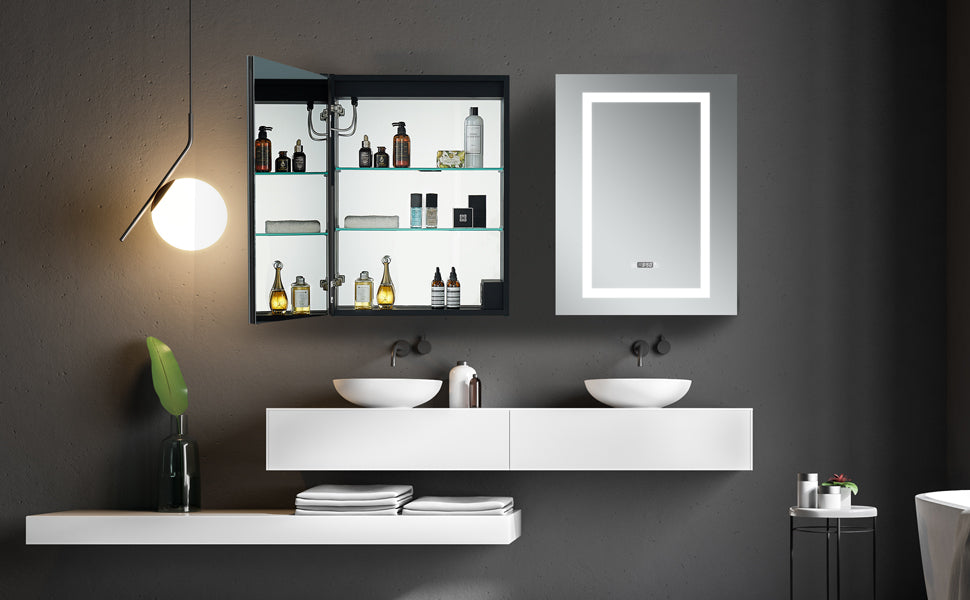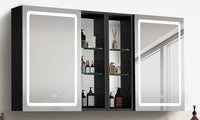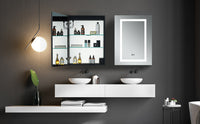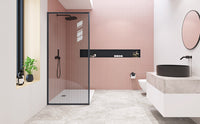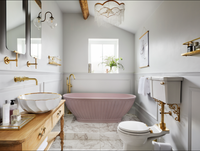The medicine cabinet is a staple in most bathrooms and it has been for a long time. It’s where people traditionally kept medicine, and today it’s where people store medicines, toiletries, hygiene products, and so much more. This storage space can become invaluable in a bathroom, but it’s only effective if you use it properly. In this guide, we’ll cover the details behind how to install a surface mount or a recessed medicine cabinet.
Installing a medicine cabinet is a relatively easy do-it-yourself job… except when it’s not. Fortunately, there’s a pretty simple way of finding out whether your DIY job is doable. Did you a buy a surface mount medicine cabinet? If yes, then DIY is always doable, unless you prefer to hire a pro. But if you’re installing a recessed medicine cabinet, then there’s a little trick you should do first to make sure that you don’t encounter any unforeseen obstacles.
How to Install a Surface Mount Medicine Cabinet?
Surface-mounting is often best if you have concrete, plaster over lath or poured plaster walls because of the difficulty of cutting through these materials.

Step 1. Scan the wall with a stud finder.
Use a stud finder to locate your wall’s studs, and mark the locations of the studs with a pencil. Bathroom walls can conceal pipes and electrical wires, so you should use caution if your stud finder identifies any other objects behind the drywall. Drilling through pipes or wires can result in expensive damage. If you are concerned about possible pipes or electrical wires, consult with a professional before you drill or cut into the wall.
Step 2. Hold the cabinet in place and make sure it’s level.
Position the cabinet at a height accessible to your household members. Usually 72 inches from the floor is a good place to start, then adjust the height according to your needs. Place a level at the top of the cabinet to make sure it’s straight. Use a pencil to trace the top and bottom outlines of the cabinet.
Having a helper to hold the cabinet in place for you will make the job easier.
Try to line up the cabinet with studs for the best support. If you can’t line the cabinet up with the wall studs, you’ll need to use plastic anchors when you drill pilot holes.
Step 3. Open the cabinet door and mark the installation holes.
With the cabinet still held in place, open the door and make sure it’s free of any obstructions. Locate the installation holes at the rear of the cabinet. Use your pencil to mark the holes on the supporting wall.
Step 4. Drill the pilot holes
Set aside the cabinet in a safe place. Drill pilot holes into the pencil marks you made on the wall that line up with the cabinet’s installation holes.
If weren’t able to line the installation holes up with the wall studs, insert plastic anchors into your pilot holes.
Step 5. Fasten the screws to secure the cabinet.
Position the cabinet back on the wall so the installation holes are lined up with the pilot holes. Drive screws into each hole to secure the cabinet to the wall.
Some cabinets come with washers or plastic bits to conceal the screws once they’re fastened. Check your cabinet’s installation guide for specific information about these or any other included hardware.
How to Install a Recessed Mount Medicine Cabinet?
If you can fit your recessed medicine cabinet between two wall studs, then you can skip the stud-cutting steps outlined below. Wall frames are usually 16 inches on center, i.e. from the center of one stud to the next. For easier-install options, look for recessed medicine cabinets under 16 inches wide. Keep in mind that the stud-to-stud space will also have to be a good placement for the cabinet, e.g. aligned with the bathroom sink.
Step 1 Cut the drywall from the cabinet space dimensions penciled on the wall, and remove drywall pieces from the stud(s).
Step 2 Use a small handsaw (or hacksaw blade) to cut any drywall screws behind the stud. That way when you cut and remove the stud, you don’t rip drywall from the other side of the wall.
Step 3 To create a recess, cut the top and bottom of the exposed stud(s) in line with the opening for the cabinet. Be careful not to cut through the opposing drywall.
Step 4 Lift the medicine cabinet and check if it fits smoothly into the opening (removing the door helps). If not, use a utility knife and/or rasp on problem spots.
Step 5 Next, measure for the blocking or cabinet frame, i.e. pieces of two by four you’ll install at the top and bottom of the opening, flush with the cut drywall. The blocking will attach horizontally to the adjacent studs and the ends of the cut stud. Apply construction adhesive to the blocking ends, place between the studs, and screw into place. Add vertical blocking on the sides of the recess.
Step 6 When the adhesive dries, install your medicine cabinet, and screw into place.

